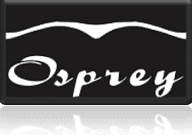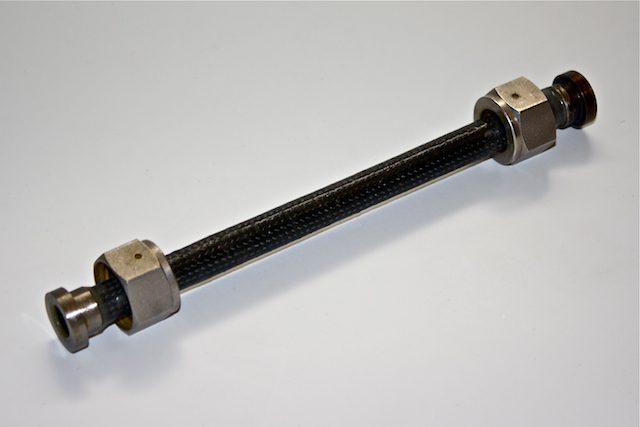Background
Over 10 years ago, Dave Crockett, the owner of Osprey Technologies, LLC, successfully designed and fabricated an all composite propellant tank with an internal common bulkhead. This propellant tank system was used in a hydrogen peroxide/kerosene upper stage propulsion system. Mr. Crockett then founded Osprey Technologies and its engineers started evaluating alternatives to the traditional metal tubing used in aerospace hydraulic and pneumatic systems at the time. In high pressure systems, there has been a natural evolution to replace metal components with composite ones. Tanks were the first to evolve from metal (stainless steel or titanium) to composite tanks. Similarly, metal tubing will soon be replaced by composite tubing.
Results and Variables
In a technical whitepaper, Mr. Crockett discusses the use of composites in place of metal tubing. This whitepaper demonstrates that for diameters and pressures above certain values, composites will outperform typical stainless steel or titanium tubes. However, there is much more analysis required in the design of composite tubing beyond a simple carbon fiber layup that can meet high-pressure requirements.
The design of a composite tube involves a number of variables or factors. These include, but are not limited to:
- permeability of the fluid (gas or liquid),
- attachment of fittings and their design,
- temperature limitations,
- CTE (coefficient of thermal expansion) concerns, and
- cycle life.
Specifications
Osprey’s high pressure tube design mirrors that of standard PVC tubing used in typical home plumbing applications. Specifically, the tube can be cut in the field and then have specific fittings, such as elbows, bends, “Ts” or other components, that can then be bonded together to produce the high pressure system.
For development, Osprey has chosen a 0.5” tube design with titanium fittings, using standard sized O-ring face seals for interfacing to metal valves, pressure transducers, manifolds, and other pneumatic/hydraulic components. Tube fittings such as bends, elbows, and Ts are currently being designed to interface with the composite tube.
Integration Benefits
Osprey’s development of high-pressure composite tubing does not strictly focus on the direct replacement of traditional metal tube systems. Instead, Osprey is exploring the integration of composites with other designs. Osprey is pursuing, and has had inquiries about, the integration of the composite pressurization system into surrounding structures. That is, the composite tubing, instead of being routed adjacent to structures, would physically be embedded in the structure. Thus, not only do they serve the purpose of communicating high-pressure fluids, but they also act as a structural member. Benefits of embedding composite tubing include:
- protection from potentially damaging environmental exposure,
- the opportunity for a more volume-optimized vehicle or system, and
- reduced part count, which in turn improves reliability.
Osprey will be ramping up its composite tubing design and fabrication efforts in mid 2015.

